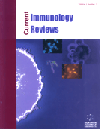-
s Modulation of Apoptosis in Acute Ischemic Stroke as Treatment Challenges
- Source: Current Immunology Reviews (Discontinued), Volume 8, Issue 1, Feb 2012, p. 39 - 49
-
- 01 Feb 2012
Abstract
Stroke is a major cause of death and disability throughout the world. Its pathophysiology is complex and includes excitotoxity, inflammatory pathways, oxidative damage, ionic imbalances, apoptosis and other cell death mechanisms, angiogenesis, and neuroprotection. The ultimate result of the complex ischemic cascade is neuronal death with irreversible loss of neuronal functions. New developments in stroke pathophysiology have induced significant advances in acute stroke management. Among the extracellular signals, inflammation, microglia and cytokines as major consequences of hypoxia may be targets for future therapies. Among the intracellular signals, calcium-induced cell death and oxidative stress as most important factors of ischemic cell death and for dysfunctions of the blood-brain barrier are important goals for neuroprotective agents. Third messengers, like p53, peroxisome proliferator-activated receptors and nuclear factor kappa-B (NF-kB) also play important roles in the pathogenesis of ischemic cell death, and may be further important targets of modern neuroprotective agents. The final stage of ischemic cell death via apopotosis and other cell death cascades, mainly influenced by energy deficiency and mitochondrial dysfunction may be influenced by antiapoptotic and other strategies as potential new targets for designing newer and more successful therapeutic modalities of acute ischemic stroke.


